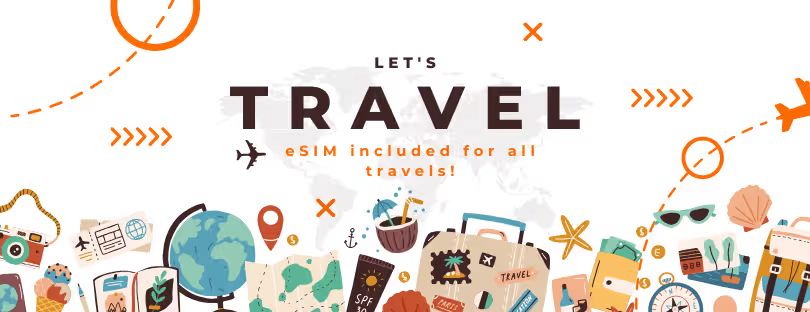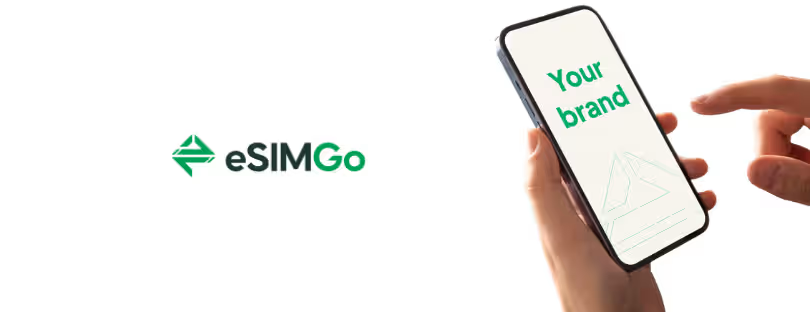
Ready or Not, eSIM-Only Devices Are Taking Over
If you’ve been following connectivity trends even a little, you’ve probably noticed a major shift happening quietly in the background: the move toward eSIM-only devices. And no, this isn’t just about Apple doing Apple things anymore. It’s much bigger, much faster, and way more consequential than most people realize.
I spent some time going through a recent whitepaper on the topic (packed with GSMA standards, future roadmaps, and very nerdy diagrams), and honestly… this is one of the biggest transformations the mobile ecosystem has seen since 4G.
So let’s break it down—conversationally, clearly, and in real-world terms—so you can actually see where everything’s going.
The Big Picture: eSIM-Only Is No Longer “If”; It’s “When”
Let’s start with the headline: 2025 is the tipping point. Apple has already gone eSIM-only in the US. Now it’s rolling out the iPhone Air internationally. Google has made the Pixel 10 lineup eSIM-only in the US. Samsung is right behind, planning selective eSIM-only Galaxy launches.
Once those three switch, the entire smartphone industry follows. Always.
Juniper Research expects:
- Apple goes fully eSIM-only across major global regions in 2026
- Google and Samsung expand eSIM-only models globally in 2027
- By 2028, most leading OEMs will have made the permanent jump
Right now, about 84% of smartphones still use physical SIMs, but that’s going to flip — hard — over the next few years. And the real kicker? Even laptops and desktops are getting on board. Already at 38% penetration, and climbing to 62% by 2030.
So whether you’re a traveler, an operator, a device manufacturer, or a business deploying IoT devices… yeah, this shift touches you.
But Here’s the Plot Twist: Consumers Might Slow Things Down
You’d think people would be ready for a future where you never have to poke your phone with a little metal needle again. But here’s the problem:
Most consumers outside the U.S. still don’t know what an eSIM is.
Not kidding.
Even those who have eSIM-capable phones often don’t use the feature because:
- They’re confused
- They don’t trust it
- They like the physical SIM they’re used to
- They think switching carriers will become harder
As of 2024, only 37% of eSIM-ready phones were actually using eSIM.
That’s shockingly low for a technology this convenient.
But the moment eSIM-only phones hit shelves in China, pre-orders sold out instantly. So let’s just say the “consumer hesitation” story ends the moment people no longer have a choice—and we’re heading straight into that phase.
Operators: The Winners and the Worriers
For mobile network operators (MNOs), eSIM is both a blessing and a “wait… what?” situation.
The good news?
New revenue streams.
More connected devices.
More opportunities in IoT, connected cars, and travel roaming.
Plus, managing eSIM profiles opens a whole new value layer for them.
The headaches?
- Compatibility
- Security
- Supporting massive deployments
- Making the onboarding smooth enough that consumers don’t flood support lines
By 2025, carriers supported eSIM in over 190 countries, so the infrastructure is mostly there—but trust me, it’s about to get a whole lot more complicated.
The IoT Explosion: Why SGP.32 and SGP.42 Matter More Than You Think
This is the part nobody talks about outside telecom circles, but it’s actually the biggest change in the whole report.
Two GSMA standards—SGP.32 and the upcoming SGP.42—will blow open the IoT market like we’ve never seen before.
Let me translate.
SGP.32 = Zero-touch IoT provisioning
Imagine deploying 20,000 sensors across a city—without needing anyone to manually install or activate anything.
SGP.32 brings:
- Automated first-boot activation
- Minimal power consumption
- Low-bandwidth operation (NB-IoT, LTE-M)
- A cloud-based manager that handles entire device fleets
It basically makes large-scale IoT deployments cheaper, simpler, and way more scalable.
SGP.42 = eSIMs loaded at the factory
This is wild.
Instead of provisioning devices in the field, manufacturers will be able to ship them with carrier profiles already installed—securely, at scale.
This means:
- One device SKU for the entire world
- Lower costs
- Faster rollouts
- No need for field provisioning
For constrained devices (like meters, sensors, and trackers), it’s a dream.
Juniper expects SGP.42 to land around late 2026 or early 2027, and when it does? The IoT market skyrockets.
How much?
They’re forecasting industrial eSIM connections growing from 64 million in 2025 to 1.2 billion by 2030.
That’s not a typo—that’s 1,800% growth.
 The Security Elephant in the Room
The Security Elephant in the Room
The moment something reaches mass adoption… attackers care.
Right now, eSIM security challenges fall into two camps:
Consumer devices
Your eSIM depends on:
- Apple ID
- cloud credentials
- OTA provisioning
Which means:
- phishing
- credential theft
- cloud outages
… become real connectivity risks.
Manufacturers are beefing up protections (like 2FA, hardware encryption), but consumers are still the weak link.
IoT and enterprise
Here, providers must:
- lock-down provisioning
- secure factories
- use IoT SAFE for end-to-end encryption
- bind profiles to device hardware
- audit everything
IoT SAFE isn’t mandatory yet, which means adoption is uneven. Smaller players may lag behind, which could introduce some pretty ugly vulnerabilities if the ecosystem isn’t aligned.
 The Global View: 4.9 Billion eSIM Connections by 2030
The Global View: 4.9 Billion eSIM Connections by 2030
The whitepaper’s biggest forecast:
4.9 billion connected devices will use eSIM by 2030, up from 1.2 billion in 2025.
China alone will jump from under 1 million smartphone eSIM users in 2025 to 364 million by 2030—and that’s despite strict ID-verification rules that make remote provisioning extra tricky.
“We expect eSIM-connected smartphones in China to surge to 364 million by 2030, despite operators in the country only commencing eSIM capabilities this year. This is a substantial growth from less than 1 million smartphones using eSIMs by the end of 2025” explained Ardit Ballhysa, Senior Research Analyst at Juniper Research.
But once China commits to a technology, it scales at levels the rest of the world can only dream of.
So… What Does All This Mean for the Average Traveler or Consumer?
A few clear takeaways:
1. Physical SIMs are going away
Maybe not tomorrow, but the countdown has started.
2. Travel will get much easier
No more hunting for SIM cards at airports.
No more swapping plastic slivers in and out.
Just download, tap, connect.
3. IoT will become insanely scalable
Smart cities, logistics, agriculture, wearables — everything connected, everywhere.
4. Security will matter more
People are going to need better digital hygiene.
Companies will need stronger provisioning protection.
The industry will need more alignment.
5. Operators and vendors must adapt fast
The winners will be the ones who simplify onboarding, automate identity checks, and offer frictionless cross-border connectivity.
Final Thoughts
The shift to eSIM-only isn’t just a smartphone story.
It’s a whole new connectivity era—where billions of devices activate themselves, IoT deployments scale effortlessly, operators reinvent their business models, and travelers finally get the seamless global connectivity they’ve been promised for years.
The next 3–5 years will redefine the telecom landscape.
If you’re in travel tech, IoT, telecom, device manufacturing, or digital infrastructure… buckle up. This is the transformation to watch.
And here’s the kicker: by 2029, travel eSIMs aren’t just “a bit cheaper” than roaming—they’re a completely different league. We’re talking 75% savings per gigabyte, based on Juniper’s latest forecast. When roaming hits over $10/GB and travel eSIMs sit comfortably under $3, the shift becomes inevitable. Travelers won’t just prefer eSIMs—they’ll demand them. This is exactly why the eSIM market is exploding, and why every operator, OTA, and travel brand needs to rethink how they serve the new, hyper-connected traveler.







 The Security Elephant in the Room
The Security Elephant in the Room The Global View: 4.9 Billion eSIM Connections by 2030
The Global View: 4.9 Billion eSIM Connections by 2030




